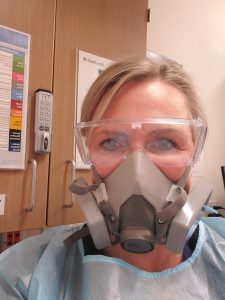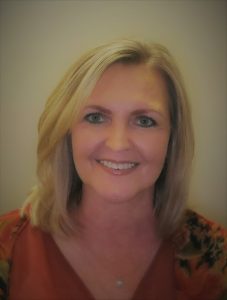19 USA, Rhonda Cornell
United States of America
The United States of America is located in North America, bordered by Pacific and Atlantic Ocean. Medicare and Medicaid are the healthcare programs of the USA. Medicare provides coverage for those who are 65 and older, with some coverage for those 65 and younger with certain disabilities or conditions. Medicaid provides coverage for those who are below a certain income level.
 Daily Activities Working with Families
Daily Activities Working with Families
In the urgent care setting, family members accompany patients for a variety of reasons including providing consent for the care of minors, moral support, mutual concern, seeking information, provision of assistance to older adults, be the sole historian or to augment the history provided. The urgent care setting sees patients of all ages and diversities. “Family” may include one or both parents (biological, adoptive, foster, custodial/non-custodial), grandparents, siblings, one or more minor or adult children, friends, or significant others.
Family nurse practitioners (NP), physician assistants (PA), and physicians (MD or DO) have the same role in urgent care though each individual provider has variation in their approved clinical privileges. This will have an influence on in-office procedures performed or if referrals are made for the needed procedures. All providers (NP, PA, MD/DO) have the responsibility to ensure that the patient/family understand their diagnosis, treatment, symptom management, the details of any follow-up appointments or referrals, and any return precautions that would warrant re-evaluation or escalation to a higher level of care such as emergency care. A family member who is willing and capable of assisting and observing their loved one can make it possible for a patient to remain in their home, avoiding follow-ups or hospital admission.
Shifting Family Nursing Practice
During the pandemic, all facets of care delivery were impacted. When a household member was positive for COVID-19 all those in the home were impacted. Exposed family members were expected to quarantine while awaiting test results and/or symptom development. Being isolated was akin to voluntary solitary confinement with family members keeping a distance in other areas of the home when possible. Those who required hospitalization were often sedated and ventilated so unable to communicate with family. Those fortunate enough to recover, may have had opportunity to communicate with loved ones via an iPad or tablet computer. Family members could not be at the bedside due to the strict isolation precautions that dominated the height of the pandemic. In primary care clinics and urgent care, one family member was allowed if the patient was a minor, an older adult requiring assistance, or in circumstances where the family member was a key historian. As a result of these circumstances, the NP making the diagnosis of COVID-19 was in position to provide emotional support for patients/families as they grappled with an uncertain physiological response, risk for family members, changes in work attendance, and altered family plans. The NP was also responsible for extensive educate patients/families on isolation, symptom management, informing contacts, signs of deterioration warranting emergency care, return to activity restrictions, and treatment options. Family members needed to understand quarantine, home testing, masking, social distancing, etc.
The pandemic cause clinic, urgent care, and emergency room patient volumes to escalate. To reduce the in-person volumes in clinic waiting areas, innovative approaches were implemented. Patient registration became a phone or online process. Computer apps displayed the wait times so people could choose a site with less patient traffic. Once registered, electronic displays showed the patient when to present for care to eliminate the in-person wait times. Patient queues were electronically displayed to help communicate to those waiting, where they were in order of being seen.
Telehealth visits expanded for non-urgent and straightforward urgent care cases. Family members provided consent for the care of minors via phone or computer. Willing family members often assisted with certain non-complex physical observation with the provider coaching. When family members were uncomfortable with this or when the condition required skilled assessment, patients/families would need to be seen in person.
Family visits for COVID-19 vaccination or testing became commonplace with parents and two-three children in the exam room for specimen collection. Some parents used a tag-team approach with one parent in the exam room and the other in their car with the remaining children. They would exchange children when it was time for the next to be seen. During the pandemic, all books, magazines, and toys commonly available in clinics were removed to prevent the spread of infection. Personal cell phones became the primary source of entertainment in the exam room with kids waiting their turn with the provider, would watch videos, or play video games. Kids would often bring in a favorite blanket, toy, or stuffed animal from home for comfort. Certain COVID-19 collection kits required specimen collection from the deeper nasopharyngeal areas which could be challenging with young children. Teaching parents an embrace that would provide comfort to the child and help to prevent movement became the key to successful collection in a non-traumatic manner.
Lessons Learned:
For the advanced practice registered nurses working with families, the pandemic afforded many lessons:
- Independent practitioners are critical to the public health of families. They provide additional access to services, support, and education. The pandemic provided challenges to education due to evolving knowledge and geographical differences in the availability of protective equipment, vaccines, screening, isolation/quarantine, and treatment. The need for current, patient/family facing information in their preferred format is key.
- The pandemic left families in vulnerable situations as we learned that healthcare is a finite resource and requires change for sustainability. We need improved ability to scale up access when public health crises occur. Families can often meet the healthcare needs of their own members with access to information, support, and resources. Public health notices would be helpful to families when items needed during a pandemic are in scare supply with real-time availability and locations.
- We learned even more about the convenience of telehealth services for families. We need to continue to refine telehealth best practices and triage methods to identify those best served by telehealth versus those that require onsite assessment.
- Having exam rooms that are family-friendly with adequate space and seating would be welcome. The environment should also have visual distractions for young children.

Additional Information About Nursing in the United States of America
There are around 4 million nurses in the USA. Around 60% of them work in the private for profit sector, 30% in the private not for profit sector, and 10% in the public sector. For education, nurses in the USA must complete a bachelor’s degree in nursing, called a BSN (Bachelor’s of Science in Nursing). To practice in the USA, nurses must pass their NCLEX. Nursing in the USA is broad with many different groups. Among them are certified nursing assistant, licensed practical nurse and registered nurse. To further advance their careers, nurses can obtain more education to become a nurse practitioner, nurse anesthetist, or obtain a masters or doctorate in nursing.
Media Attributions
- Rhonda Cornell 1-1
- Rhonda Cornell 2-1
